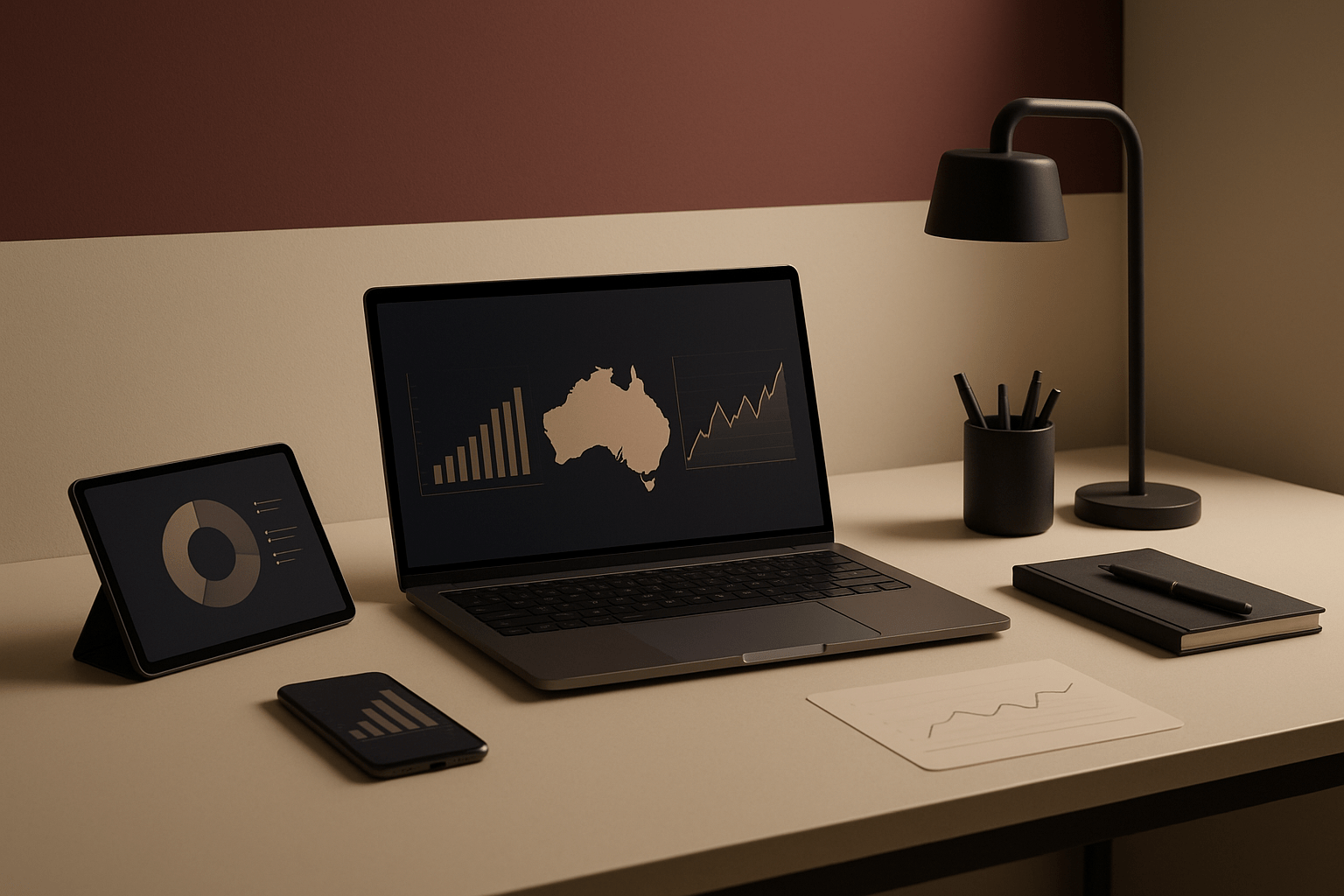Invest
How to balance liquidity with returns
When you’re investing your own money, it’s important to stay liquid in case of an emergency or just to keep up with your lifestyle. But in a climate of low interest rates, how can you do so without sacrificing your return?
How to balance liquidity with returns
When you’re investing your own money, it’s important to stay liquid in case of an emergency or just to keep up with your lifestyle. But in a climate of low interest rates, how can you do so without sacrificing your return?

Most people with assets of any worth have them tied up in superannuation and property, which means their wealth is largely locked up.
Super is a wonderful concept but unless you are retired, it’s very much a “hands off” proposition since the government has designed the system to prevent you from accessing your savings until 55 at the earliest.
As for property, that definitely involves locking up your money. Certainly, property can be a great long-term bet. But what’s worrying at the moment is that a lot of people of working age are deciding property is the best place to be. But in reality, after you pay off the real estate agent to manage your property, interest costs and stamp duty, there may not be much left, especially in the first years after buying a property.
Of course, negative gearing helps, that is, the generous tax deductions which you get by deducting interest and rental running costs from your taxable income, which cuts your tax bill. But negative gearing doesn’t negate the fact that you have to pay substantial expenses in the first place.

The main problem with property is interest rates risk, that is, that rates will rise. That’s not so likely at the moment, with the official Reserve Bank interest rate having been cut to an historic low of 1.5 per cent. But rates won’t stay low for ever. Eventually, they’ll rise and this can push down the value of property.
There are far better ways to keep your investments liquid.
Number one is cash, of course. But just remember you will be lucky to earn 2 per cent in a deposit account. Fixed interest investments such as term deposits will pay a little more but you usually have to lock up your money for that privilege.
Which brings us to listed securities such as shares. Yes, they can go down as well as up but the stock market is highly liquid. You can buy and sell shares any day the ASX is open for business, which is all weekdays except public holidays. You can access your funds quickly, if you need to.
It’s worth considering initial public offerings (IPO). Companies that are joining the market, or being floated, tend to have to issue shares at a slight discount. And the returns at the moment are so far ahead of most other investment categories that you have to look at the numbers twice.
During July the nine companies that were newly listed on the ASX saw their share prices rise by an average of 15.7 per cent, according to the OnMarket July IPO Report 2016.
That was a month when the general share market went well, climbing by 9.4 per cent if you use the standard measure, the S&P/ASX200 index.
And how liquid are the investors playing in that IPO market? The answer is, very liquid once floated. There’s always a time lag between subscribing for shares and being able to sell them, which is one of the reasons for the discount, but it seldom exceeds a month, and if you sell shares, the money drops into your account no more than three days after the trade.
It’s worth a thought, especially if your wealth is mostly tied up in property and cash, which is true of most of us.
Tim Eisenhauer, managing director, OnMarket BookBuilds

Stock market
6K Additive secures A$48 million through initial public offering on the Australian Stock Exchange
6K Additive, a prominent player in the advanced metal powders and alloy additions market, has made a significant stride by successfully completing its Initial Public Offering (IPO) on the Australian ...Read more

Stock market
Institutional investors increase stock allocations to 18-year high amid cautious market shifts
In a recent development, State Street Markets unveiled the findings of its latest State Street Institutional Investor Indicators, revealing intriguing shifts in institutional investor behaviourRead more

Stock market
FOREX.com launches in Australia to empower self-directed traders
StoneX Group Inc. (NASDAQ: SNEX) has announced the Australian launch of FOREX.com, expanding access for self-directed traders to a global suite of Contracts for Difference (CFD) products across ...Read more

Stock market
Westpac and CMC Markets strengthen partnership to enhance online trading services
In a significant move that underscores the evolving landscape of online trading in Australia, CMC Markets Stockbroking has been chosen as the preferred vendor by Westpac Banking Corporation to extend ...Read more

Stock market
Portfolio reviews as an operating discipline: turning volatility into a competitive edge
In a higher-rate, higher-volatility world, portfolio reviews are no longer an annual hygiene task; they’re a core operating rhythm that protects cash flow, unlocks tax alpha, and sharpens risk ...Read more

Stock market
Fee war on the ASX: Global X’s A300 turns up the heat on core Aussie equity ETFs
Global X has lobbed a 0.04% management fee into Australia’s core equity sandbox, launching the Australia 300 ETF (A300) to take on entrenched giants. Read more

Stock market
Challenger IM shakes up the ASX with private credit note and a side of risk
Challenger Investment Management has taken private credit mainstream with an ASX-listed note structure—LiFTs—that secured roughly $100 million in cornerstone commitments within a day of launch. Read more

Stock market
International stocks: Diversifying your portfolio beyond Australia
In an increasingly globalized market, Australian investors have the opportunity to enhance their investment portfolio by incorporating international stocks. Diversifying your investments globally can ...Read more

Stock market
6K Additive secures A$48 million through initial public offering on the Australian Stock Exchange
6K Additive, a prominent player in the advanced metal powders and alloy additions market, has made a significant stride by successfully completing its Initial Public Offering (IPO) on the Australian ...Read more

Stock market
Institutional investors increase stock allocations to 18-year high amid cautious market shifts
In a recent development, State Street Markets unveiled the findings of its latest State Street Institutional Investor Indicators, revealing intriguing shifts in institutional investor behaviourRead more

Stock market
FOREX.com launches in Australia to empower self-directed traders
StoneX Group Inc. (NASDAQ: SNEX) has announced the Australian launch of FOREX.com, expanding access for self-directed traders to a global suite of Contracts for Difference (CFD) products across ...Read more

Stock market
Westpac and CMC Markets strengthen partnership to enhance online trading services
In a significant move that underscores the evolving landscape of online trading in Australia, CMC Markets Stockbroking has been chosen as the preferred vendor by Westpac Banking Corporation to extend ...Read more

Stock market
Portfolio reviews as an operating discipline: turning volatility into a competitive edge
In a higher-rate, higher-volatility world, portfolio reviews are no longer an annual hygiene task; they’re a core operating rhythm that protects cash flow, unlocks tax alpha, and sharpens risk ...Read more

Stock market
Fee war on the ASX: Global X’s A300 turns up the heat on core Aussie equity ETFs
Global X has lobbed a 0.04% management fee into Australia’s core equity sandbox, launching the Australia 300 ETF (A300) to take on entrenched giants. Read more

Stock market
Challenger IM shakes up the ASX with private credit note and a side of risk
Challenger Investment Management has taken private credit mainstream with an ASX-listed note structure—LiFTs—that secured roughly $100 million in cornerstone commitments within a day of launch. Read more

Stock market
International stocks: Diversifying your portfolio beyond Australia
In an increasingly globalized market, Australian investors have the opportunity to enhance their investment portfolio by incorporating international stocks. Diversifying your investments globally can ...Read more








